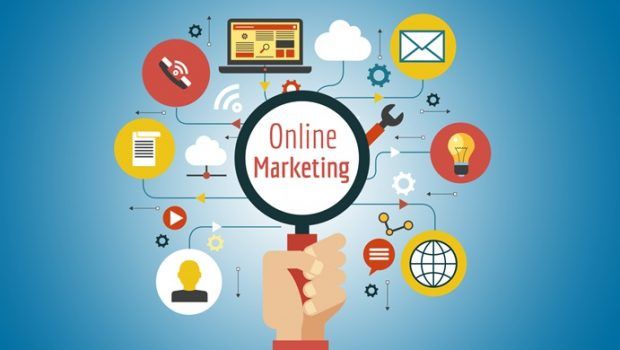
 If you ever feel lost in the ocean of Internet Marketing (including Blogging, Search Engine Optimization, Search Engine Marketing, Pay Per Click, and Social Media) jargon/glossary and acronyms, you should not worry because you are totally not alone. Below is my ultimate straight-talking 166 out of the most common terms in Internet Marketing jargon buster that may make you confuse when searching information about Internet Marketing. If you have any questions, suggestions, or need further help, feel free to let me know by leaving a comment, I will help you out. “Press Ctrl+F or ⌘+F to search terms on this page”
If you ever feel lost in the ocean of Internet Marketing (including Blogging, Search Engine Optimization, Search Engine Marketing, Pay Per Click, and Social Media) jargon/glossary and acronyms, you should not worry because you are totally not alone. Below is my ultimate straight-talking 166 out of the most common terms in Internet Marketing jargon buster that may make you confuse when searching information about Internet Marketing. If you have any questions, suggestions, or need further help, feel free to let me know by leaving a comment, I will help you out. “Press Ctrl+F or ⌘+F to search terms on this page”
1. 404 Error Page:
This is a protocol that is used to automatically show an error page when users finds a non-existing webpage.
2. 302 Redirect:
This is a method of URL redirection. It is actually the requested resource resides temporarily under a different URL. This is often used with secondary domain names for a site.
3. ASV:
ASV stands for Average Sale Value. It is determined by taking the total revenue created by the website and dividing it by the total amount of sales.
4. ASP:
ASP – Active Server Pages – is Microsoft‘s server-side active scripting to generate dynamic webpages.
5. ASCII:
ASCII stands for American Standard Code For Information Interchange. It is a character encoding according to English alphabet. ASCII codes represent text in communications equipment, computers, and other devices working with text.
6. API:
API stands for Application Programming Interface. It is a source code interface that a program library or computer system offers to support requests for services to be made of it by a CP program. 
7. AOL:
AOL stands for America On Line is an online service provider, a search engine and web portal that directly partners with Google.
8. Analytics:
This is the study of website, user, or behavioral patterns. An invariable analytics programs will study server logs but they can be formed, using tracking techniques as well.
9. Algorithm:
It is used by common search engines, such as MSN, Yahoo, or Google, to define your advertising position ad rank and score, basing on multiple influential factors, including Ad Text, CPC, Quality, Landing Page, and CTR.
10. Affiliate:
This is a 3rd party promotion partner that is simply paid on the results that they create. 
11. AdWord:
AdWords is Google’s PPC management interface.
12. Ad Text:
Ad Text is the advert that triggers when a keyword within its advert group has been convoked within a search engine.
13. Ad Rank:
Ad Rank (score) identifys where an ad text lies within the search engine listings. For example, a low rank would be on the 2nd-3rd pages of the search engine listings while a high rank would be the first at the top.
14. Ad Group:
An Ad Group is a collection of similar keywords grouped together by a single ad text.
15. Action:
An Action is something that a webmaster will define which a user performs. Examples may be viewing a page, calling for information, signing up for an offer or submitting details to a website.
16. Bounty:
Bounty is a term commonly associated with affiliates and affiliate programs. It is essentially another word for commission.
17. Bounce Rate 
The percentage of times people visit a webpage and leave while do not click through to any other page. It will be better if your bounce rate is low. From my own experience, bounce rate will directly affect your site’s search engine ranking position.
18. Black-hat SEO:
A frowned upon practice of using “illicit” tricks to boost the rank of a website highly in search engine results pages. There are people doing back-hat SEO and continue doing so, You should not do this if you do not want to see your website banished to the cellar of search results once and for all.
19. Blog: 
This is a website, where people write entries in chronological order and show them up in reverse chronological order. It provides commentary or news on a particular topic, such as health, entertainment, lifestyle, politics, food, or local news, and more. Blogs can be also considered personal online diaries.
20. Bidding:
This is the process that is used to change the cost-per-click on a search engine. This can be done using Bid Management Software or manually. One of the most popular sites for bidding text and display ads is Google Adwords.
21. Bid Management Software:
This is a software that contains strategies and rules to control search engine keyword bid prices. They invariably operate using search engine and an API access key.
22. Bid Landscape:
This term is used to describe the listings that are appearing. The landscape contains the bid prices that advertisers are bidding to in a specific field.
23. Best Practice Funding (BPF):
BPF – Best Practice Funding – is Google’s way to up the productivity of SEM agency. Based on the SEM’s gross Google sales, Google gives a percentage of sales back to the Agency every quarter only in case that they follow the strict Google guidelines.
24. Banner:
Banner is a dynamic or static image advertisement that can be placed on a publishers site. You will find banners are placed more often on the right side-bar of most websites.
25. Browser:
 This is a tool which people can use to browse the Internet. The most popular browser is Internet Explorer, others include Safari, Netscape, Google Chrome, and Firefox.
This is a tool which people can use to browse the Internet. The most popular browser is Internet Explorer, others include Safari, Netscape, Google Chrome, and Firefox.
26. B2C:
B2C – Business to Consumers, this is in reference to a business communicating to it’s consumers.
27. B2B:
B2B – Business to Business, this is in reference to a business communicating to other businesses.
28. CTR
 CTR – Click Through Rate – a measure you can use to evaluate the success of your advertising campaign online. Given as a percentage score, it is assessed by the amount of clicks you got for your advertising, divided by the count of times the advert appeared in the search results. Typically, the higher CTR, the better you ads perform.
CTR – Click Through Rate – a measure you can use to evaluate the success of your advertising campaign online. Given as a percentage score, it is assessed by the amount of clicks you got for your advertising, divided by the count of times the advert appeared in the search results. Typically, the higher CTR, the better you ads perform.
29. CSS:
CSS – Cascading Style Sheets – This is a primary method of formatting and glamming up a webpage. The style sheets control all of the fonts, images and locations of items as they load on a page.
30. CRM:
CRM – Customer Relationship Management
31. CPS:
CPS – Cost per Sale. This is the same metric as cost per conversion but relating solely to sales.
32. CPM
CPM – Cost Per 1000 impressions – CPM is a method of charging for advertising based on impressions rather than clicks. CPM is a cost per 1000 impressions. Example: I spend £10 and received 5000 impressions my CPM would be £2.00 (£10 / (5000 impressions / 1000 impressions). Websites are normally selling ads for monthly payment, cost per 1000 impressions, and cost per click.
33. CPC:
CPC – Cost Per Click – is the cost paid out for each click purchased. It can be figured out by dividing the total cost by the total amount of clicks to give you a CPC.
34. CPI:
CPI – Cost-Per-Impression – another form of getting payment for search engine marketing. Instead of paying-per-click, people can also pay for the times of impressions their own page receives. If your marketing goal is not brand awareness, CPC is actually a greater payment option, comparing to CPI, because you just pay for actual clicks to your site instead of the times your advert is displayed. From my experience, if you carefully design and evaluate your ads, you will be better off when bidding for CPM.
35. CPA:
CPA – Cost per Acquisition or Action. This is the same metric as cost per conversion but relating solely to actions. Internet Marketers use CPA to track performance of their ads, email subscriptions, and more.
36. CMS:
CMS – Content Management System – the part of your site you use to add (or delete) and improve your webpage’s content. Currently WordPress is the No.1 CMS in the world because it is so simple to apply, especially for site beginners.
37. Cost/Conv:
Cost/Conv. – Cost Per Conversion – is a simple metric identical to CPA or CPS. It is the total cost divided by the total number of sales.
38. COS:
COS – cost of sale is a measurement of success in marketing. It is essentially the reverse of ROI. It is calculated as a percentage buy dividing the total expenditure buy the total revenue. For example if I spend a £1 and make £5 my cost of sale would be 1/5 therefore 20%.
39. Cookie:
HTTP Cookies, sometimes known as just cookies or web cookies, are the parcels of text which is sent by a server to a webbrowser, and then sent back without making any change by the browser each time it accesses to the server. They are used for maintaining, tracking, and authenticating particular information about users.
40. Conversion Point:
Conversion Point is the point at which a conversion occurs.
41. Conversion Page:
The Conversion Page is the page that performs and completes the conversion. For example, when Internet Marketers track their email subscription rate, they would normally use a thank you page to insert the script to track the overall campaign’s performance.
42. Conversion:
A Conversion is a defined action which has inherent value to the website’s owner. Examples would be a completed sale or completed application.
43. Conversion Rate:
 A useful tool to measure how successful a site is. When you are selling a product, this rate will show the amount of visitors who go from viewing your products casually to actually purchasing them. If you are offering a service for payment, you can manage and measure the conversion rate through the amount of visitors who decide to call from the site, fill in contact, and so on.
A useful tool to measure how successful a site is. When you are selling a product, this rate will show the amount of visitors who go from viewing your products casually to actually purchasing them. If you are offering a service for payment, you can manage and measure the conversion rate through the amount of visitors who decide to call from the site, fill in contact, and so on.
44. Content:
Content is the particular knowledge that you introduce to people worldwide through your website. It can be also the key to get success in SEO.
45. Confirmation Page:
This is the page that appears after a person has performed an action. It appears to confirm the completion of the action.
46. Commission:
Commission is the payout given to 3rd party promotion agents be them them affiliates or an SEM agency.
47. Client Side:
Client Side programmed actions that occur on the users systems. The opposite to Server Side
48. Click Fraud: 
Click Fraud is term used to describe malicious clicks on Paid Results in search engines. Often the realm of bitter competitors or sentinel software programs, the search engines have very sophisticated methods of detecting and eradicating the threat. So advertisers don’t need to worry that their ads getting click fraud.
49. Clicks:
A Click is the term used for when a prospective customer clicks on your link, ad or banner .
50. CGI:
CGI – Common Gateway Interface ( CGI ) is a standard protocol for interfacing external application software with an information server, usually a web server. This allows the server to pass requests from a client web browser to the external application. The web server can then return the output from the application to the webbrowser.
51. C2A:
C2A – Clicks to Actions is a conversion rate metric. Generally represented as a % it is the amount of actions divided by the count of clicks to achieve those actions. 5 Action, 100 Clicks would give me a 5% C2A%.
52. C2S:
C2S – Clicks to Sales is a conversion rate metric. Generally represented as a % it is the number of sales divided by the amount of clicks to achieve those sales. 5 Sales, 100 Clicks would give me a 5% C2S%.
53. Campaign:
A Campaign is the term given to a marketing initiative. Your could have an ongoing campaign or a time constrained campaign. Each campaign would have its own goals and targets.
54. Caching: 
Caching – When a webpage loads in a browser files such as images and CSS are downloaded to your computer’s Temporary Internet Files. They store here or ‘Cache’ here so when you return to the site the page can load directly from your system. This is called Caching, to clear your cache will remove these temporarily internet files. This explains why when you come back a website from the same URL (without clearing cache), the site will load a lot faster than the first time you visit.
55. Drop Off Rate (Drop Out Rate):
Drop Off Rate is calculated by looking at the number of people who leave the website. whilst moving through the sales process. Each stage users will drop and this is classed as the drop off rate. A high DOR is not good!
56. Domain:
A Domain is the human readable format of a website. address. For example vkool.com that is our domain address.
57. DNS:
DNS – Domain Name System – combines many sorts of information with domain names. Most important, it acts as the “phone book” for the Internet. DNS translates human-readable computer host names into the IP addresses that are needed for the networking equipment to deliver information. DNS also stores other information.
58. DMOZ: 
DMOZ is the ‘Open Directory Project’ the largest, most comprehensive human-edited directory of the Web. It is constructed and maintained by a vast, global community of volunteer editors. Getting a link from DMOZ is hard, but it’s worth the effort as it comes from one of the highest authority sites.
59. Direct Hit (DH):
This is a user that directly hits a site without using other referring sources. For example, you type the domain address into the browser’s URL and hit enter.
60. Deep Linking:
This is the linking of ad keywords or texts to the best page in a site.
61. Day Parting:
This is a term which is combined with a bidding technique. Day Parting is the setting of bids to correspond to optimal times in the day.
62. EPC:
EPC – Earnings Per Click – is a metric that is often combined with Affiliate programs. EPC is the sales value taken from each click.
63. EDM:
EDM – Email Direct Marketing – this term is also known as Electronic Direct Marketing. This includes marketing strategies via email to attract clients to visit your site, call, make orders, or attend an event. People can set up EDM’s for different targeted audiences. It is very affordable and easy for you to track how well they work.
This is a community-based site. It is the same with a blog where users can show up their opinions and exchange experiences on anything. However, forum allows participants to add new topics, comment without moderation, however, forum works well if it’s monitored closely by Forum administrators and moderators, while blog is monitored by the site owner(s).
65. Form:
This is an interactive part of a site that thanks to it, users can submit to the information that is stored or used by the website. Internet Marketers normally use Opt-in forms to attract email subscriptions.
66. Flash:
Flash is a graphic editing suite, allowing you to create movie clips and images. You can publish them to GIF, JPEG, SWF, or HTML formats.
67. FFA:
FFA – Free For All link page is a webpage where any webmaster can post a link with a description.
68. Favicon:
Favicon is a file type used for populating the browser address bar with a pretty branded image. You should see VKool.com favicon on the browser address bar.
69. FAQ:
FAQ – Frequently Asked Questions
 In 1996, Google was founded by Sergey Brin and Larry Page. Google is widely seen as the biggest and most popular PPC Search Engine in the UK. Their supply is increasing with the selection of Mobile, Radio, Banner, and more Multimedia advertising forms. It is safe to say that Google is at the top of internet marketing solutions. English Dictionary even has Google’s definition, and people commonly say “google it” when they want to search for something.
In 1996, Google was founded by Sergey Brin and Larry Page. Google is widely seen as the biggest and most popular PPC Search Engine in the UK. Their supply is increasing with the selection of Mobile, Radio, Banner, and more Multimedia advertising forms. It is safe to say that Google is at the top of internet marketing solutions. English Dictionary even has Google’s definition, and people commonly say “google it” when they want to search for something.
71. Graphics Interchange Format (GIF):
GIF is an 8-bit-per-pixel bitmap image format which was launched by CompuServe in 1987. It has now come into widespread usage on the WWW due to its portability and widely support.
72. GAP:
GAP – Google Advertising Professional – is a test in industry standard for anyone who use PPC forms. GAP is actually a must for every reseller of Google’s services.
H
73. HTML: 
HTML – Hypertext Markup Language – is the basic language that is used predominantly to create webpages. HTML offers a mean to denote text-based information’s structure in a document by showing certain text, such as lists, paragraphs, and headings, and add embedded images, interactive forms, and other objects to that text.
74. Hit:
Every time a user enters your site from an external source is regards as a hit.
75. HTTP:
HTTP – Hypertext Transfer Protocol – is a communications protocol that is used to transfer or convey information on the WWW.
76. ISP:
ISP – Internet Service Provider is a company which offers internet services to users, such as Internet transit, Internet access, dial-up access, domain name registration and hosting, leased line access and colocation.
77. Interstitial:
Interstitial is an advert that loads between two content pages.
78. Internet Protocol (IP):
IP – Internet Protocol is a data-oriented protocol. It is commonly used to communicate data across a packet switched internetwork. It offers the communicable unique service, addressing worldwide among computers.
79. IP Address: 
IP Address is a particular address that electronic devices use to determine and communicate with others on a computer network. It utilizes the IP standard, in simpler terms, a CP address. Every participating network device, such as Internet fax machines, printers, time-servers, computers, routers, and telephones, has a unique IP address.
80. Impressions:
Impressions are the amount of times your webpage has been visited. When it comes to paid search, impressions are the number of times your advert has appeared in the search results.
81. Inbound Links (IBL):
The amount of links on other sites that point back to pages on your site (external links). Having a lot of inbound links, your site will be more likely to turn to be ‘relevant and important’ Google deems, and then, it will rank higher.
82. JPEG:
JPEG is a normalized method of photograph compression.
83. Keywords/Key-phrases:
The words and phrases your potential customers are most likely to use when searching for your products and, therefore, the ones you need to target.
84. Keyword Density:
 The amount of times your targeted keywords appear in your site pages. As a rough guide, aim for somewhere between 2 – 5% of your words to be keywords or phrases. Don’t overuse these words or search engines could penalize you for trying to unfavorably dominate rankings in search engines by pushing your website low in the search results.
The amount of times your targeted keywords appear in your site pages. As a rough guide, aim for somewhere between 2 – 5% of your words to be keywords or phrases. Don’t overuse these words or search engines could penalize you for trying to unfavorably dominate rankings in search engines by pushing your website low in the search results.
85. Logs:
Logs is every time an action performed on a website, a page view, a file, or an image load request.
86. Links:
Links (primarily using a URL) is the coded connection between a website and another. Standard links are movies, graphics, and text but they can take several forms.
87. Link Checker:
This is a “guard” program that is designed to check links’ content or to see whether or not they are down or dead.
88. Leader Board:
This is a standardized image size for an ad banner.
89. Lead:
A Lead is when a potential client contacts with a business to get more information about services and products. A Lead can be generated online via a form, email, or over the telephone.
90. Landing Page:
This is the page that appears when a user clicks through a link.
91. MSN:
MSN – Microsoft Network – is a gathering of Internet services offered by Microsoft. The MSN AdCenter is their Pay-Per-Click service.
92. MPEG:
This term is developed by the Moving Picture Experts Group. This is a standardized video encoding and compression technique.
93. Mouse Trapping:
This is a method of disabling the browser back button to try and trap a user on your website.
94. Moderator:
Moderator is an individual that moderates the the content of a blog or forum.
95. Mod Rewrite:
This is a method of generating a static URL from a dynamic one. Mod Rewriting is commonly used for SEO purposes to boost the pages navigation for spiders.
96. Meta Tag: 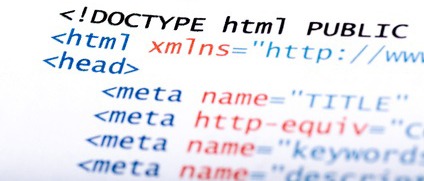
META Tags are HTML elements that are used to offer structured meta data of a webpage. They must be seen as tags in the top of an HTML document. These elements contain the keywords and description that describe a webpage.
97. Merchant:
A Merchant is a term commonly used in Affiliate Marketing to describe the business that also wishes to be affiliated.
98. Masked Auction:
This is a search engine keyword auction that from there, you cannot see your competitors’ positions or bid prices. You also cannot position your ad text categorically within the search results as it is determined by the algorithms of search engines.
99. Netiquette:
This is the term for net etiquette that reflexes the conventions of politeness in using Internet.
O
100. Overture:
This is a search engine that was purchased by Yahoo! and is now belongs to the Yahoo Search marketing system.
101. Over Delivery:
This term is to describe the over delivery of Google’s clicks. In fact, the Adwords system is able to spend as many as 20% over the budget, what exactly is the over delivery.
102. Outbound Links:
Outbound Links are contrast to an inbound link. Outbound Link is a URL link that is contained in your webpages, linking out to an external website.
103. Order in MSN:
This term is used for an AD Group within the MSN Ad-center.
104. Optimize:
Optimizing your site is using SEO techniques, including On-page and off-page optimization that helps your page rank highly in organic search results.
105. Product Id:
A Product Id is a unique identifying code for a product.
106. PPS:
PPS – Pay Per Sale – is a method of marketing payment whereby you just pay for completed sale.
107. PPL:
PPL – Pay Per Lead – is a method of marketing payment whereby you just pay for completed leads.
108. PPI:
PPI – Pay per impression – is an internet advertising method where the advertiser pays whenever their ad is spawned within a page.
109. PPC
PPC – Pay Per Click – is generally mentioned as part of the phrase ‘PPC Advertising’ or ‘PPC Marketing’. It is a way of internet advertising where the advertiser just pays when their advert is clicked on hence pay per click.
110. PPA:
PPA – Pay Per Action – is a method of marketing payment, and then you just pay for completed activities.
111. Pop-Up: Pop-Up is a marketing pop up window that suddenly occurs over the top of the browser window that people are viewing.
112. Pop Under:
Pop Under is a marketing pop up window that that suddenly occurs underneath the browser window that people are viewing.
113. Pixel Image:
This is a popular method of tracking nowadays. Like a normal image, the single pixel image is placed the same way into a webpage. However, rather than covering an image, it has encoded within the image the relevant tracked information.
114. PHP:
PHP is a reflective programming language that is basically designed for creating dynamic webpages.
115. PFP:
PFP – Pay For Performance – is a payment model whereby you just pay for the generated results.
116. PFI:
PFI – Pay For Inclusion – is paying to have webpages contained in a SE’s database and updated regularly.
117. Peretos Law:
Peretos Law that 20% of your business or processes does 80% of the productivity. A common PPC analogy that 20% of you keywords will do 80% of the revenue.
118. Page Views:
This term is any time a webpage is called upon to be shown in a browser.
119. Page Rank (PR):
PR is a term used by Google to show the importance of a page on the website. A low page rank would be 0 and the highest one would be 10.
120. Quality Score (QS):
QS – Quality Score – is the value that reflexes your ad text’s quality in Google AdWords. QS is calculated by many factors, including CTR, the quality of ad text, and landing page quality.
R
121. ROS:
ROS stands for Run Of A Site. It is when your adverts are displayed and rotated across all the pages of a site for a time period.
122. RON:
RON – Run Of The Network – is when your ads are rotated and displayed across an entire advertising network for a period of time.
123. Return On Investment (ROI): 
ROI is a measure of campaign success. ROI is determined as a percentage by dividing your profit by your cost multiplied by 100%.
124. Return On Advertising Spend (ROAS):
ROAS is also a measure of campaign success. ROAS is determined as a percentage by dividing your revenue by your cost multiplied by 100%.
125. Referrer:
Referrer is the source of the referring traffic. For example, if you search on Google for a bookshop and click on the top link, you will access to the bookshop site and your referrer would of been Google as that is what lead you to the site.
126. Reciprocal Links:
Reciprocal Links are links that are reciprocated between you and another site. i.e. you have a link on your site pointing to a partner site and the partner site has a reciprocal link pointing back to yours.
127. Session:
This is the term that shows time spent traveling around a website. As soon as a visitor enters a website, it triggers a session, and it closes the session as soon as the user leaves the website again. Session will store all of the users’ activities while they were on your website.
128. Session Tracking:
Session Tracking is a method of tracking users activity on your website using the session.
129. Session ID:
Session ID is the particular identifier that is combined with a session.
130. SMO:  SMO – Social Media Optimization
SMO – Social Media Optimization
(it is also well-known as SMM – Social Media Marketing). It includes everything related to marketing your site using common social media channels, such as Google+, Twitter, LinkedIn, and Facebook.
131. SWF:
SWF is a movie file which has been created using Macromedia Flash.
132. Super Affiliate:
Super Affiliate is an affiliate that drives extreme volumes of traffic and sales.
133. SSI:
SSI is a Server Side Include, it is code that is included into the webpage when it is spawned by the server.
134. Spider:
Spider is a term given to the programmed bot of search engines used to crawl the web extracting information about the the websites.
135. Split Testing:
Split Testing is the means of testing different ad text by dual serving them and monitoring the results. An example would be: Internet marketers use 2 different landing pages to test which one gives them higher email subscription rate.
136. Splash Page:
Splash Page is a page that loads up before you enter the main site. They often have flash content on them which users have the option to skip.
137. Source Code:
Source Code is the raw html coding of a webpage.
138. Skyscraper:
Skyscraper an online ad significantly taller than the 120×240 vertical banner
139. Shopping Engine:
SE is similar to search engines acception rather than searching on websites to create results. In fact, they search via multiple product supply to create results. They act on a PPC basis where advertisers submit their product supply.
140. Shopping Cart Abandonment:
Shopping Cart Abandonment is the epidemic of users dropping off the website whilst going through the processes of shopping cart.
141. Shopping Cart:
Shopping Cart is the software that drives the sales process of the site. It is like a virtual shopping trolley which users can add and remove products to, and then proceed to checkout to purchase.
142. Server Side:
Server Side programmed actions that occurs on the server before a webpage is spawned. The opposite to Client Side.
143. Server:
 Server – a server is a computer that is on all the time and linked to the world wide web. It is the store for website files which we access from the Internet. In other words the server is a dedicated computer that hosts websites.
Server – a server is a computer that is on all the time and linked to the world wide web. It is the store for website files which we access from the Internet. In other words the server is a dedicated computer that hosts websites.
144. SERP
Literally, SERP stands for Search Engine Results Page – what Google exposes when you type in a search query.
145. SEP:
SEP Search Engine Positioning – the process of getting your page listed on the search engine results page. Similar to SEO.
146. SEO:
SEO – search engine optimization is the process of website optimization to get the website to appear higher up in search engine rankings for particular keywords and phrases.
147. Search Term:
Search Term is another term for keyword.
148. SEM:
SEM is the abbreviation of search engine marketing or marketers.
149. SE:
SE stands for Search Engine.
150. Sale ID:
Sale ID is a particular identifying code generated at point of sale, relating to that sale on the site.
151. Sales:
This term shows a class of actions whereby a client has exchanged money with the advertiser to get services and products.
152. Traffic:
This term is used to describe the total amount of users coming through a webpage.
153. Tracking:
This is the monitoring of a site or the successfulness of a marketing strategy. There are several types of tracking software and many levels of tracking.
154. The Fold:
It is line at the bottom of the screen when a webpage loads. “Below the fold” is what the user sees if they scroll down the page. “Above the fold” is what the user can see upon loading
155. USP:
USP – Unique Selling Proposition or Point is used to describe the main feature of a service or product.
156. Usability:
This is the study of a website that helps you look at the functionality of the website only. It is not just about making sure everything on the site works, but how quickly and easily visitors are able to make use of your site.
157. URL:
URL – Uniform Resource Locator – is a web-related, technical term that is used for the physical address of website or a webpage on the WWW.
158. Unique Visitor (UV)
Unique Visitor is a visitor to your website that has never come before, therefore being completely unique.
159. Visit:
Visit is when a person goes to a website. Therefore, getting 5 visits means 5 people had visited the webpage.
160. Viral Marketing:
This is a method of marketing that concentrates on spreading the word about your product virally.
161. WWW:
WWW the abbreviation of the world wide web otherwise known as the internet.
162. WHOIS:
WHOIS is a TCP-based response or query protocol. It is used widely for querying a database to identify the owner or admin of an independent online system, an IP address, or domain name.
163. W3C:
W3C – the world wide web consortium – set down internationally recognized quality standard guidelines for the construction of webpages and websites.
164. YSM Ambassador:
This is a criterion which SEM agencies must be separated in the US if they are to resell Yahoo Search Marketing services and products.
165. YSM:
YSM – Yahoo! Search Marketing – is Yahoo’s PPC engine.
166. Yahoo: 
This is an online portal which has one of the largest user bases on the Internet. Yahoo offers a lot of services, including web-mail. It is one of the 3 biggest search engines, along with MSN and Google.
That is all about Internet Marketing jargon buster that I would like to introduce today. If you see this jargon buster gathering of online marketing terms is useful and interesting, please Like, Share, Tweet, and even Google+ this post, so it can help more people. Don’t forget to leave your comments below to let me know your thoughts.
Want More Content Like This In Your Inbox?
- Infinite Tattoos Designs Review – Can This Site Work For You?
- Error Expert Review – Does This Guidebook Work?
- Media traffic meltdown teaches ways to increase traffic to website
- The Handcrafter’s Companion Review – Is It Reliable?
- How To Buy A Piano For Beginners – Tips To Choose The Best Piano
- Fap Turbo Review – Does Steve Carletti’s System Work?
- Video User Manual Program Review – Is It Reliable?
- How To Increase Reading Comprehension Skills In Adults

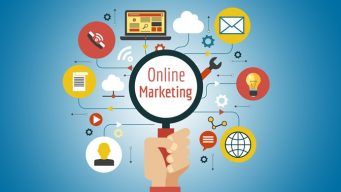






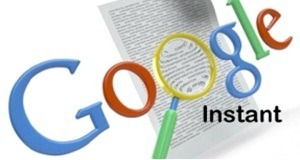

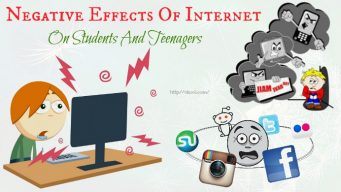






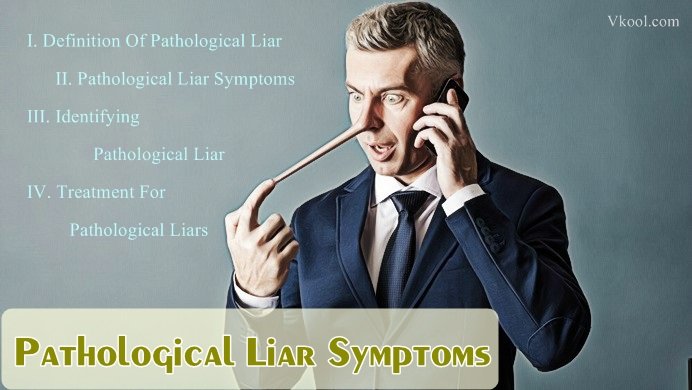



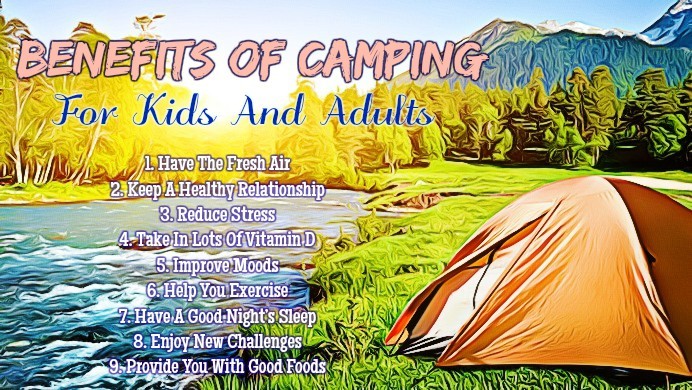
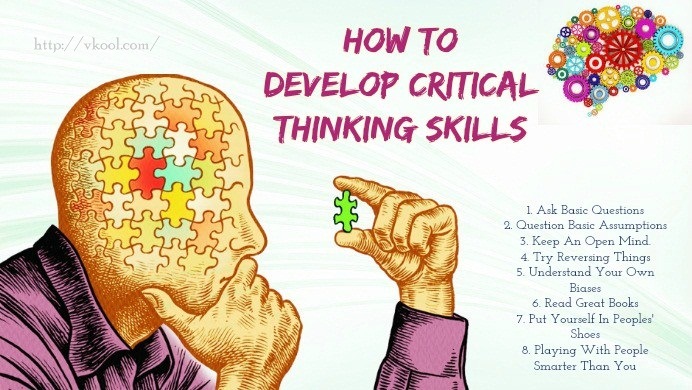
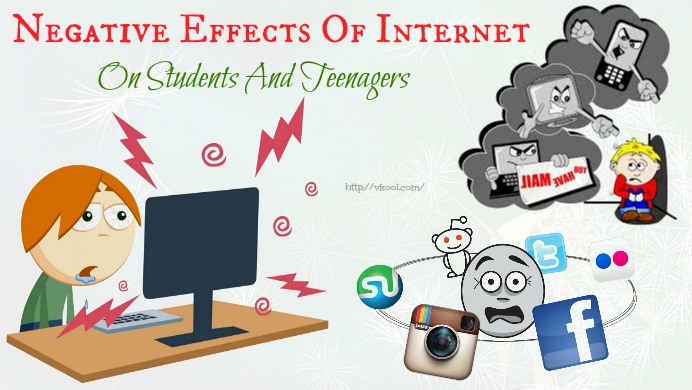
 Craig Orell’s How To Recondition Batteries At Home Review
Craig Orell’s How To Recondition Batteries At Home Review  Focus Emagazine Download Review – Is Amy Renfrey’s Guide Useful?
Focus Emagazine Download Review – Is Amy Renfrey’s Guide Useful?  15 Dog Training Tips – Basic & Easy Tips Are Revealed
15 Dog Training Tips – Basic & Easy Tips Are Revealed  The credit axis review – how do you get a loan with this system?
The credit axis review – how do you get a loan with this system?  Gaming Jobs Online Review – Is This Program Beneficial To You?
Gaming Jobs Online Review – Is This Program Beneficial To You?  Cool And Crazy Things To Do Before You Turn 20, Guys!
Cool And Crazy Things To Do Before You Turn 20, Guys!  New styles of glasses and sunglasses 2024 for you to choose
New styles of glasses and sunglasses 2024 for you to choose  Registry Fix Software Download Review – Does It Really Work?
Registry Fix Software Download Review – Does It Really Work?  How To Write Songs That Sell Review – Is It Reliable?
How To Write Songs That Sell Review – Is It Reliable? 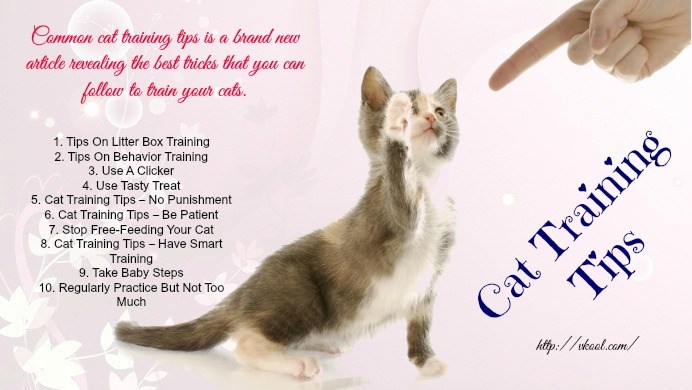 12 Cat Training Tips That You Should Know
12 Cat Training Tips That You Should Know